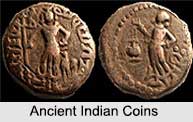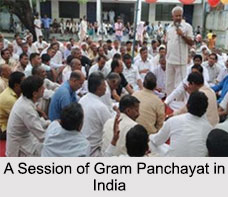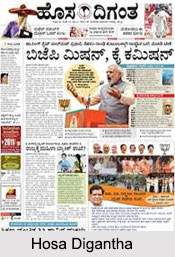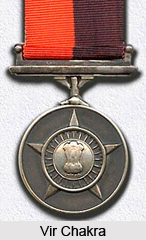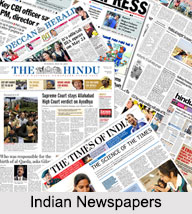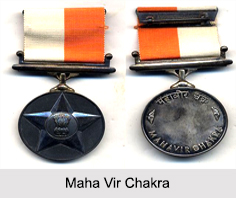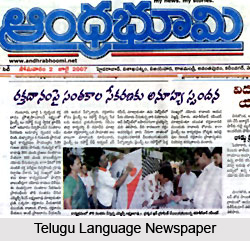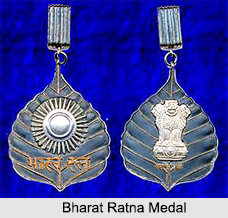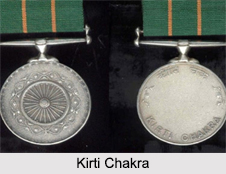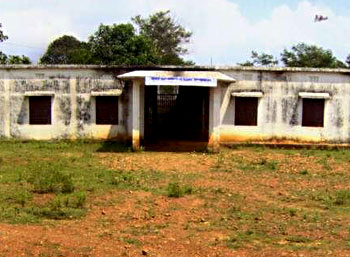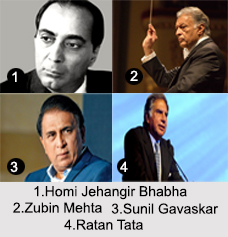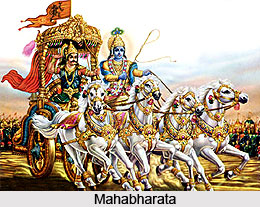 Indian Army in ancient period had a strong framework and organization. The archaeological history of Indian Army dates back to more than 2500 BC, when an urbanised civilisation known as the Indus Valley Civilisation flourished along the banks of River Indus, in the alluvial north - western plains. Similar findings like the coastal cities of Lothal and Dwarka came to light more recently along the coast of Gujarat. However, the Indus Valley Civilisation`s two urban centres at Mohenjodaro and Harappa gradually declined in the second millennium BC, and almost completely disintegrated around 1500 BC due to ecological reasons like drying up of rivers and drought. The coastal cities disintegrated due to massive floods. With many recent landmark findings refuting the invasion of Asian-European people, or the Aryans, the military history of India dates back to around 6th century BC, encompassing the period when some of the more militant forces like the Persians, Greeks, the Turks, Huns, Mongols and so on crossed over into the more fertile and alluvial plains of India from the north-western route. Reliable account of military customs and traditions, prevailing four hundred years before the Christian era, is available from Greek writers.
Indian Army in ancient period had a strong framework and organization. The archaeological history of Indian Army dates back to more than 2500 BC, when an urbanised civilisation known as the Indus Valley Civilisation flourished along the banks of River Indus, in the alluvial north - western plains. Similar findings like the coastal cities of Lothal and Dwarka came to light more recently along the coast of Gujarat. However, the Indus Valley Civilisation`s two urban centres at Mohenjodaro and Harappa gradually declined in the second millennium BC, and almost completely disintegrated around 1500 BC due to ecological reasons like drying up of rivers and drought. The coastal cities disintegrated due to massive floods. With many recent landmark findings refuting the invasion of Asian-European people, or the Aryans, the military history of India dates back to around 6th century BC, encompassing the period when some of the more militant forces like the Persians, Greeks, the Turks, Huns, Mongols and so on crossed over into the more fertile and alluvial plains of India from the north-western route. Reliable account of military customs and traditions, prevailing four hundred years before the Christian era, is available from Greek writers.
Indian Army in Epic Age
A brief idea about the structure and formation of the Indian Army during the ancient age can be obtained from the two epics Ramayana and Mahabharata. According to historians, the ancient history of Indian Army dates back to around ten thousand chequered years. The massive epic war of Mahabharata`, fought at Kurukshetra, has left some deep imprints on the Indian mind. Fought relentlessly for eighteen days in quest of peace, the force level described in the Epic states 18 `Akshaunis`, seven with the `Pandavas` and eleven with the `Kauravas`, amounting to nearly 400,000 assorted troops fighting on chariots, horses, elephants and foot soldiers. Thereafter, a large number of battles were fought mostly in the quest of universal peace and `dharma`. During the ancient period there was a definite change from the earlier composition of the army. Besides the infantry and chariots there were horses, elephants, pioneers and even naval forces. The role of Dronacharya, as depicted in the Mahabharata, as a teacher of both the Kauravas and Pandavas is very significant. Besides the Kshatriyas, other citizens also took part in the fighting and enrolled themselves as charioteers.
Indian Army and Conflicts in Ancient India
Though scanty details are available of the early conflicts between the invading forces, but evidence shows that some of the invaders did manage to slowly overrun western India and consolidated their hold along the Indo - Gangetic plains, and in the process subdued numerous native tribal kingdoms through pitched battles. Their advance further south was generally halted by the jungle - covered Vindhya Mountains. Those apart, certain areas along the western coast and the Deccan plateau were hilly and sparse - unsuitable for the movements of considerable bodies of people. However, this vast area also lent itself favourably to resistance against invasion by loose fighting warriors, such as the Marathas who subsequently became a force to reckon with. The other major pre-condition of war in India was and continues to be the climate.
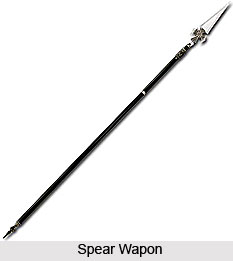
Native Tribal Army of Ancient Times
The armies of the native tribes were made up mostly of foot-soldiers, later come to be known as the infantry. The bow and arrow were their principal weapons. Cavalry was non-existent as horses were scare. Around 537 BC Cyrus of Persia reached the region of modern Peshawar, and his successor Darius suppressed part of north-western Punjab. Their invasions brought home to the Indians the importance and utility of cavalry, however Indian climate conditions were not contributory for the breeding of good horses, and therefore reserved for pulling the war chariots of kings and nobles. So chariots continued to be relied upon as the decisive weapon of war. Warriors were the most honoured and leading classes of society. Wars usually had limited objectives and were fought for the most part with far less barbarism than elsewhere in the world. Rarely did the locals indulge in mass slaughter after a victory. Such knightly and rather ritualistic conduct of war made conquest by less meticulous invaders rather easy.
Indian Army under Mauryan Rule
Wars were most prominent in the politics and literature of ancient India. Occasionally great kings like Chandragupta Maurya succeeded in subduing and unifying most of the people of India. Manuals of statecraft, such as, the Arthashastra of Kautilya, relating to the period 300 BC to 100 AD, indicate the prominence of war as an instrument of state policy. Arthashastra is one of the most significant documents of military history ever to be written. It is an exhaustive treatise on the early concepts of government, law and war. Its military section cover the composition and structure of armies, the role and function of the arms and services, training concepts and methods, duties of various military functionaries, strategic and tactical concepts, defensive fortifications, leadership and management of large armies.
It was during this period that war elephants made an appearance on battlefields and they continued to be used by Indian warriors, right unto the seventeenth century. Although the Mauryan standing army was based on infantry, it had a force of 30,000 cavalry, 8,000 chariots and 9,000 elephants. The cavalry was well trained and was employed to attack from a flank, and for exploiting captured positions. During advance they protected the front, flanks and rear. In defence they were held in reserve and were used to harass the attacking forces and to pursue them when enemy offensive was defeated. The principal weapon used with the elephant was the bow and arrow, supplemented with javelins and spears.
The Commander-in-Chief had to be a person adept with the employment of various components of the army which then consisted of the four arms - elephants, horses, chariots and infantry. He was well versed in the art of war backed by sufficient practical experience. The entire army was placed under him. He had to be proficient in the use of the ground and selected the same for his own side before an engagement. He was also required to find out the strength of the enemy through his own intelligence system and also to sow seeds of dissension in the opponent`s army. He was also required to designate the various regiments and formations. These were usually given the names of commanders and their trumpets and banners. Maintenance of balance of power formed an important adjunct of state policy.
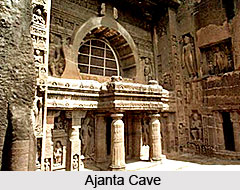 There are accounts of intermittent wars which the various tribes fought against each other as also against the intruding foreigners. Battles in the past were fought almost in the same manner as at present by the Indian Army. When an enemy force was reported to be approaching the borders, elaborate preparations were made for defence. The bow and arrow was the principal weapon of attack besides the spear, sword, dagger, mace, sling and axe. The cave temples of Ajanta give some interesting details of weapons, armies crossing of rivers with elephants and horses on boats. Indian Army in Ancient India also emphasised the importance of training. Raw, untrained and inefficient soldiers were considered equal to bales of cotton. Further, in the Rig Veda there are many references to the employment of envoys for civil espionage. The Agni Purana, Ramayana and Mahabharata contain mention of envoys being used for military espionage, in addition to their other functions.
There are accounts of intermittent wars which the various tribes fought against each other as also against the intruding foreigners. Battles in the past were fought almost in the same manner as at present by the Indian Army. When an enemy force was reported to be approaching the borders, elaborate preparations were made for defence. The bow and arrow was the principal weapon of attack besides the spear, sword, dagger, mace, sling and axe. The cave temples of Ajanta give some interesting details of weapons, armies crossing of rivers with elephants and horses on boats. Indian Army in Ancient India also emphasised the importance of training. Raw, untrained and inefficient soldiers were considered equal to bales of cotton. Further, in the Rig Veda there are many references to the employment of envoys for civil espionage. The Agni Purana, Ramayana and Mahabharata contain mention of envoys being used for military espionage, in addition to their other functions.







